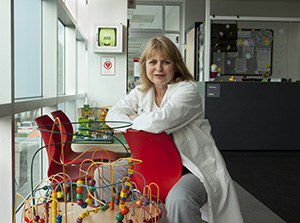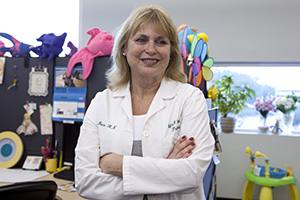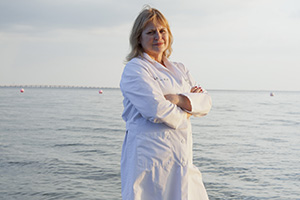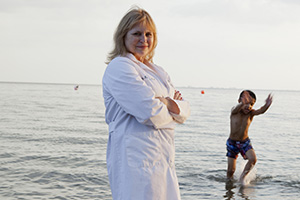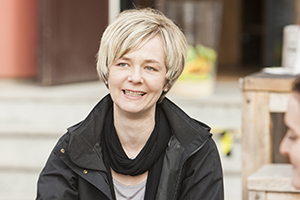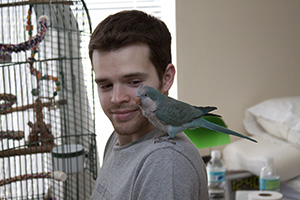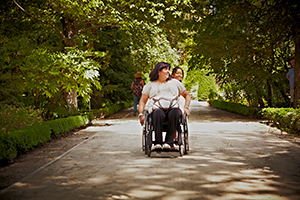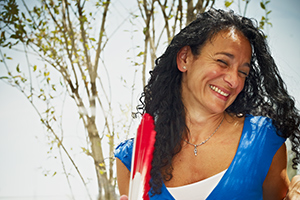Stories of Triumph and Inspiration
Kathleen Meehan-Farrar: Continence Care Clinician, United States
The year is 1966. Kathy is studying to be a Licensed Practical Nurse through a programme offered by her high school in Rockland County, New York. She is assigned to write about a young boy in a hip spica cast: a body cast that starts at the upper chest and continues down each thigh to just above the knee. The child was born with spina bifida. (Many children with spina bifida undergo pelvic or hip surgery and are casted to ensure adequate healing.) It is Kathy’s first case study, and the available research on spina bifida is exasperatingly thin.
The dictionary she consults defines spina bifida as “a condition incompatible with life.” Yet here is this ebullient 10-year-old boy.
“The past is a foreign country. People do things differently there.” – Ralph Waldo Emerson
Occurrences of spina bifida can be traced back thousands of years, but it wasn’t until the 1970s that successful lifesaving treatments were discussed and mandated.
Public acceptance of spina bifida has been long in coming. When the malformation is detected during prenatal tests, women – those with access to Children’s Medical Services in Southern Florida – may be counseled by Kathy. She tells them about Maya and Rebecca and Jonathan and Devan and Trinity and Joel and Laporcha and Anna and Joseph and Shalicia and Katie and Genesis – these are just some of the children with whom Kathy has an enduring relationship. They are all living with spina bifida.
Over time and with age, we begin making connections between certain events in our lives. Patterns emerge. We see how this led to that, and isn’t it interesting that happened then and now this. Things we previously thought of as isolated occurrences – fortuities, trials, moments large and small – are in fact a strand of serendipities.
“Therein lies the beauty of retrospection.”
On a visit to Tampa to see her grandparents in 1968, Kathy fell in love. She never returned to New York state to live. The beauty of the bay, the orange glow of south Florida sunsets and the Latin influence entranced Kathy then – and entrances her still. For 40 years Kathy has resided in the same house on a quiet street beneath a verdant canopy of subtropical trees. She raised her four children there. Kevin, her fourth child, was born with spina bifida.
Idealism, as a quality of being, differs from optimism in that acceptance of the untoward doesn’t depend on minimisation, but rather seeks to maximise lessons learned and to put them to good use. Kathy is an idealist. Looking back, she realises that she spent her whole life preparing for Kevin’s arrival. He was born May 14, 1980.
“My first thought”, she remembers, “was what in heavens did I write in that report!”
When Kevin was two, Kathy, now a Registered Nurse, was asked to head a new spina bifida clinic at the University of South Florida medical school in Tampa. She had – and continues to have – so much success working with spina bifida babies and their families that early on, she acquired the nickname Myelo Mom – “myelo” being short for myelomeningocele (pronounced my-low-ma’-nin-je-seal) – the most severe form of spina bifida.
In 1986 Kathy was elected president of the Spina Bifida Association of Tampa, a post she held for four years. “I learned as I went along”, she admits, “mostly from the babies themselves, especially Kevin. Boy did I learn a lot from Kevin.” Her voice trails off and for a moment Kathy drifts into a reverie.
We never know where life will lead. We make plans, we dream dreams, we aspire, we love. We languish, too, sometimes. In the end it is the transference of goodness – what we give freely of ourselves to others without expectation of reward – that matters most.
Kathy’s eyes are radiant blue and smiling and do not mask a profound sadness. At 17, her son Kevin is a good-looking, energetic young man with a zest for life. For his high school graduation picture, he wears a grey T-shirt with a small insignia that reads “No Fear.” Having been dogged by bladder infections for the past year (he’d never had one prior), it is decided that Kevin will undergo urologic surgery to move his ureters to help prevent the infection-causing reflux. The procedure is relatively routine, but complications developed for Kevin. Despite all she wills and wishes for over the course of five excruciating days post-op, Kevin dies.
“They say that ‘Time assuages,’ –
Time never did assuage –
An actual suffering strengthens
As Sinews do, with age –
Time is a Test of Trouble –
But not a Remedy –
If such it prove, it proves too
There was no Malady.”
– Emily Dickinson
A majestic Guanacaste tree, with its expansive canopy and unusual pods that rattle like maracas, stands as sentry or totem in Kathy’s back garden. She looks to this tree, a non-native like herself, for courage.
“No fear.”
